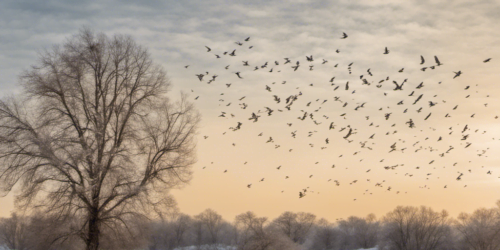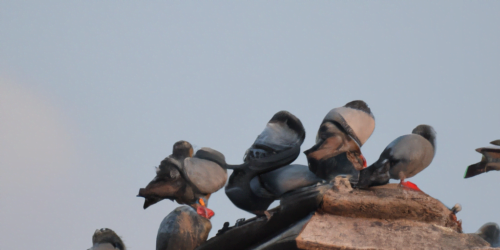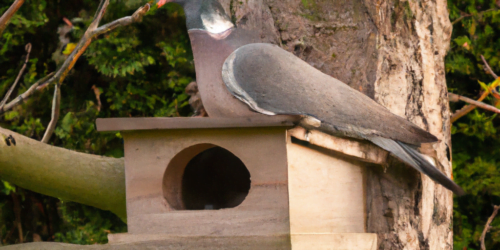Where Do Birds Go in The Winter?
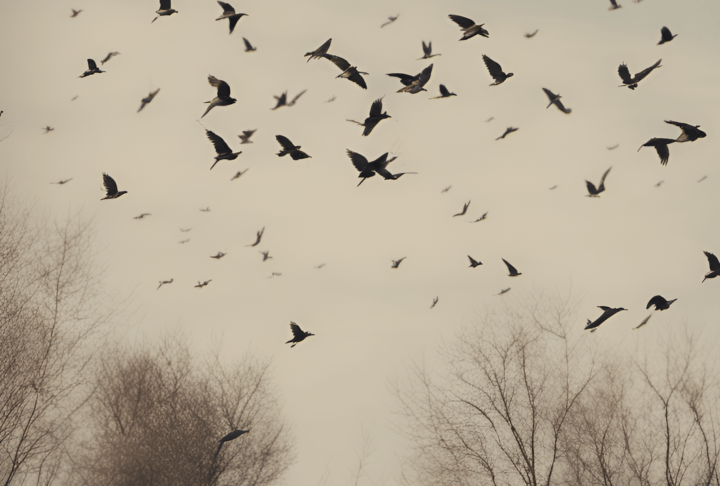
Do you wonder where do birds go in the winter, where our winged friends disappear to when winter arrives?
It’s a fascinating question that has captivated nature enthusiasts for centuries.
As temperatures drop, many bird species vanish from sight, leaving us wondering about their whereabouts.
But fear not! We are going to delve into the mysteries of bird migration and explore the incredible journeys these avian travellers undertake each year.
The enchanting realm of bird migration is no ordinary phenomenon—it involves seasonal movements of remarkable precision by numerous species worldwide.
These majestic creatures embark on incredible journeys across continents and oceans with an inherent purpose: to find more favorable conditions for survival and breeding.
Table Of Contents
If you’ve ever questioned why birds migrate, the answer lies primarily in their pursuit of food resources and suitable nesting grounds during different seasons.
As nature’s pantry dwindles, our feathered friends understandably seek areas where food is abundant and climatic conditions are amenable to raising young.
The wonders within bird navigation add another layer of awe to this natural spectacle.
Researchers have uncovered various clues used by birds for navigation—celestial cues such as star positions, magnetic fields, landmarks or scent trails left by previous generations—yet it remains astonishing how they navigate immense distances without losing their way.
Migratory routes can span thousands upon thousands of kilometers; however, each year individuals within specific populations manage to return unerringly close to their precise original locations—a testament not only to avian navigational abilities but also to the highly coordinated efforts these creatures undertake throughout their journeys.
Where do birds go in the winter? It’s a question that has intrigued nature lovers for centuries. As the temperatures drop, many of our feathered friends seem to disappear from sight. But where do they go?
Do they simply hibernate like bears, or is there another reason behind their disappearance?
The Basics of Bird Migration
Bird migration is a phenomenon shared by numerous species around the world. It refers to the seasonal movement of birds from one geographical location to another in search of more favorable conditions for breeding and survival. Every year, millions of birds navigate vast distances across continents and oceans with remarkable precision.
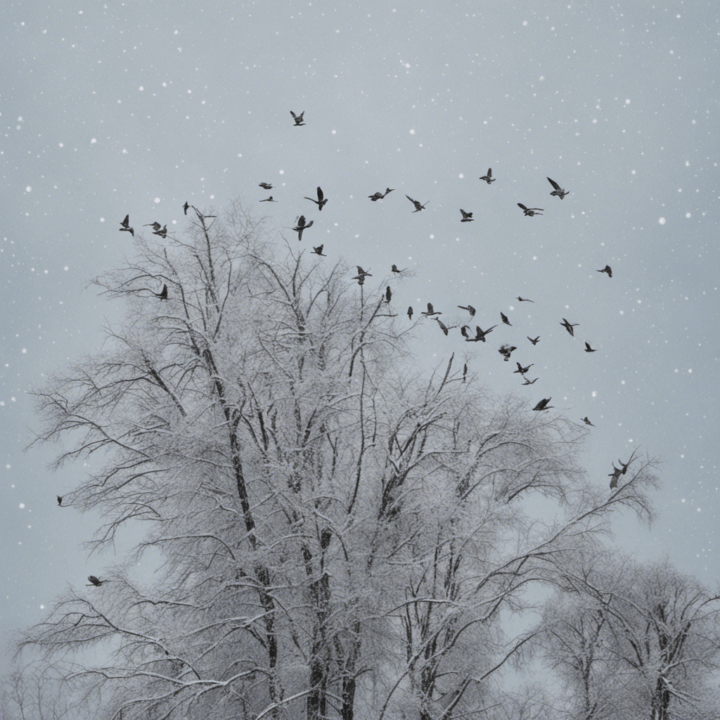
Understanding Why Birds Migrate
So why exactly do birds migrate?
The primary motivation behind this behavior is finding better access to food resources and suitable nesting grounds during different seasons.
Typically, birds migrate towards areas where resources are abundant and climatic conditions are more favorable for raising young.
During winter months when food becomes scarce and temperatures plummet in their summer habitats, many bird species find it necessary to embark on long-distance journeys toward warmer regions with plenty of available food sources.
These migratory patterns ensure their chances of survival increase significantly.
The Wonders Within Bird Navigation
The ability for birds to successfully navigate such immense distances poses an enigma that scientists continue to unravel today.
While researchers have identified various cues that aid bird navigation—such as celestial cues like star positions, magnetic fields, landmarks, or even scent trails left by previous generations—it remains awe-inspiring how these creatures can perform such feats without getting lost.
Some migratory routes span thousands upon thousands of kilometers; yet every year, individuals within specific populations miraculously return unerringly close to their precise original locations—a testament not only to avian navigational abilities but also to the highly coordinated efforts these creatures undertake throughout their journeys.
Migration Patterns: Near and Far
Perhaps one of the most famous examples of bird migration involves the Arctic Tern, which embarks on a mind-boggling journey twice a year.
These birds breed in Arctic regions during summer, then migrate all the way to Antarctic waters for their winter season—covering around 70,000 kilometers each round trip!
While not all bird species undertake such extreme migrations, there are plenty of fascinating migratory patterns that occur globally. For example:
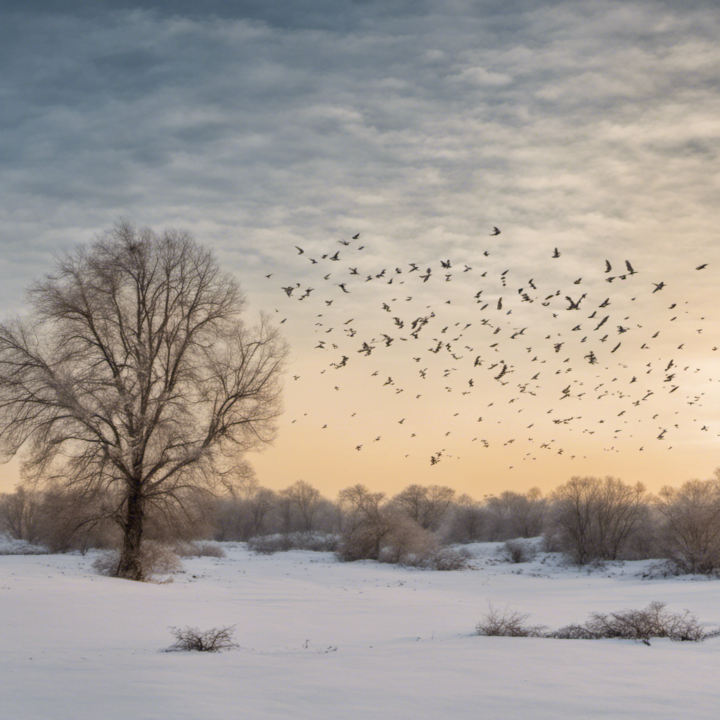
1. The Monarch Butterfly vs. The Ruby-throated Hummingbird
Both species cover impressive distances during migration—one flying south from Canada to Mexico and the other crossing hundreds of miles over open ocean from Central America to reach North America’s eastern coast.
| The Monarch Butterfly (Danaus plexippus) |
|---|
| Averages around 4,000 kilometers per journey. |
| The Ruby-throated Hummingbird (Archilochus colubris) |
| Crosses up in excess of 800 kilometers—a feat for such a tiny creature! |
2. The Bar-headed Goose
Known as the highest-flying migrating bird, it soars over the towering Himalayas—the tallest mountain range on Earth—during its annual migration between India and Tibet.
3. Shorebirds Along Flyways
Shorebirds like sandpipers or plovers shuttle vast distances along different flyways worldwide—from Alaska down through Latin America or even stretching across entire continents. These are just a few examples among countless incredible migratory journeys undertaken by various avian species across our planet every year.
The Importance of Conservation
Understanding bird migration is not just a remarkable scientific pursuit; it also carries significant implications for conservation efforts.
Migratory birds face numerous threats throughout their journeys, including habitat loss, climate change, pollution, and predation.
Protecting the habitats critical to these birds during migration—and throughout their life cycle—becomes paramount in ensuring their continued survival. International collaborations among researchers, organizations, and governments have become vital in conserving migratory bird species.
So now that we know a bit more about bird migration patterns and understand why they embark on these incredible journeys—where do they actually go in winter? Well, the answer varies depending on the specific species. Some might choose milder climates within their summer ranges while others head south across vast distances to seek warmth and food resources midway or even across hemispheres.
Whether it’s observing flocks of geese flying overhead or marveling at shorebirds dancing along seashores during different times of year—it’s clear that bird migration represents one of nature’s most extraordinary spectacles.
Next time you spot a flock of birds soaring through the sky or hear their melodic songs carried by warm breezes consider where they’ve come from and where they’ll be heading next.
The intricate journeys undertaken by these avian wanderers truly deserve our admiration—and our commitment to protecting them for generations to come.
Key Takeaways from the Article “Where do birds go in the winter?”
- Bird migration refers to the seasonal movement of birds from one geographical location to another in search of better conditions for breeding and survival.
- Birds migrate primarily to find access to food resources and suitable nesting grounds during different seasons.
- The ability for birds to navigate such long distances poses an enigma, but scientists have identified various cues that aid their navigation including celestial cues, magnetic fields, landmarks, and scent trails left by previous generations.
- Some bird species undertake extreme migrations like the Arctic Tern which covers around 70,000 kilometers each round trip from Arctic regions to Antarctic waters.
- The Monarch Butterfly travels about 4,000 kilometers per journey while the Ruby-throated Hummingbird crosses over 800 kilometers despite its tiny size.
- The Bar-headed Goose is known as the highest-flying migrating bird as it soars over the towering Himalayas between India and Tibet.
- Shorebirds like sandpipers or plovers shuttle vast distances along flyways worldwide—from Alaska down through Latin America or even spanning entire continents.
- Migratory birds face threats throughout their journeys including habitat loss, climate change, pollution, and predation. Conservation efforts are vital for protecting them and their habitats at critical points throughout their life cycle.
FAQ’s – Where do birds go in the winter?
Q: Why do some birds migrate during the winter?
A: Many bird species have evolved to migrate during the winter months due to a lack of food and harsh weather conditions. By traveling to warmer regions with abundant resources, they increase their chances of survival.
Q: What is bird migration?
A: Bird migration is the seasonal movement of birds from one place to another, typically between breeding and non-breeding grounds. It is an instinctual behavior that allows them to find better feeding opportunities and suitable habitats.
Q: How far can birds travel during migration?
A: The distance traveled by migrating birds varies depending on the species. Some may only cover a few hundred miles, while others undertake astonishing journeys spanning thousands of miles. For instance, arctic terns hold the record for migrating from pole-to-pole, covering around 44,000 miles annually.
Q: Do all bird species migrate?
A: No, not all bird species take part in long-distance migration. Some are sedentary or residents who stay in one area year-round if sufficient resources are available. Others exhibit short-distance or altitudinal migrations within their local range.
Q: Where do migratory birds go during winters?
A: Ruby-throated hummingbird
| Bird | Migratory Destination(s) |
|---|---|
| Snow geese | Northern parts such as Canada and Alaska |
| Central America or Mexico | |
| Arctic tern | Antarctica during the southern winter, and Arctic regions in the northern summer |
| Ruddy turnstone | Southern coastlines including South America, Africa, Australia and New Zealand. |
Q: How do birds navigate during migration?
A: Birds use various navigation strategies while migrating. They may rely on celestial cues such as the position of the sun and stars, geomagnetic information to detect Earth’s magnetic field, landmarks, smell, or even their innate sense of direction.
Q: Can migratory birds find their way back home accurately?
A: Yes! Migratory birds often display remarkable precision in finding their breeding grounds or wintering sites year after year. Scientists believe they utilize a combination of genetic programming and experiential learning through previous migrations to navigate effectively.
Q: Do all migrants return to their exact departure points?
A: While some migratory birds have site fidelity and return precisely to where they started from when migrating back home each year (even from thousands of miles away), other species have general target areas rather than specific destinations.
Q: What happens if migratory birds get disrupted during migration?
A: Migratory birds may face numerous challenges that disrupt their journey. These include habitat loss due to human activities, extreme weather events like storms causing fatigue or fatalities mid-flight, light pollution disorienting them at night leading to collisions with buildings/structures.
Q: Are there any risks involved in bird migration for individuals or populations?
A: Yes! Migration poses risks such as predation by predators along the route (e.g., falcons, cats), exposure to extreme weather conditions, exhaustion due to long flights and limited food resources, habitat degradation and loss affecting stopover sites, etc.
Q: Can we help migratory birds during their winter travels?
A: Absolutely! We can support the well-being of migratory birds by creating bird-friendly habitats in our own backyards or communities. Providing food sources (e.g., bird feeders) and maintaining clean water sources can greatly contribute to their survival during winter.
